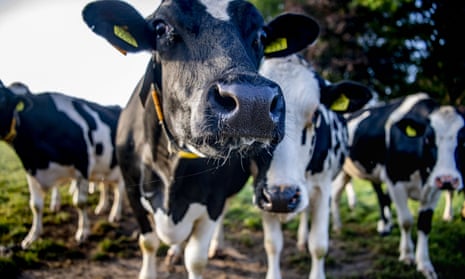There is a well-established solution to preventing cow manure spews into our rivers: anaerobic digestion (Most UK dairy farms ignoring pollution rules as manure spews into rivers, 19 April). The manure is put into a closed container and the micro-organisms, already present in the cow’s gut, break down any organic material, in the absence of oxygen, to form a combustible gaseous mixture of methane and carbon dioxide (known as biogas), and a liquid fertiliser.
The gas can be burned to produce heat or to generate electricity. The fertiliser can provide extra income. Enclosing the manure reduces the smell. There are already farms in the UK using the technology, as do some sewage treatment works. And biogas from sewage was used for street lighting in Exeter as long ago as 1895.
Joy Clancy
Professor emerita of energy and gender, University of Twente
